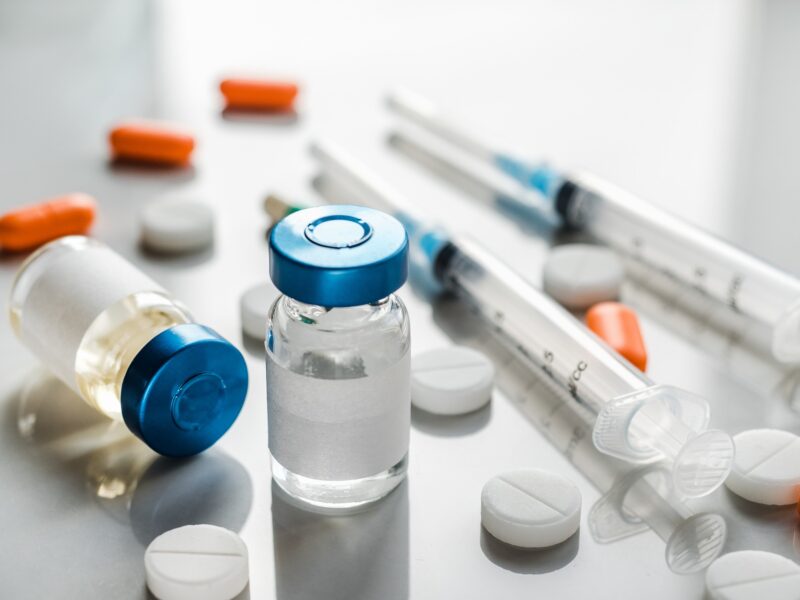New Modalities & More Upsides in the Oncology Drug Market
New modalities, ADCs and bispecific antibodies, accounted for $18 billion in cancer medicine spending in 2024 and are fast-growing on a pipeline basis. What else stands out in the oncology drug market?
By Patricia Van Arnum, Editorial Director, DCAT, pvanarnum@dcat.org
Snapshot view: upsides in the global oncology drug market
The annual meeting of the American Society of Clinical Oncology (ASCO), which was held last week and this week (May 30 to June 3, 2025), is a time when bio/pharma companies highlight the latest developments in their oncology drug pipelines and commercial portfolios. Oncology represent the largest therapeutic sector in the global bio/pharmaceutical industry on a value basis and is continually one of the highest growth areas. What is the outlook for the global oncology drug market, and what are the greatest growth prospects?
Global spending on cancer medicines, not including additional medical costs or supportive care medicines, grew 75% over the last five years (2020–2024), with global medicines spending reaching $252 billion in 2024 and projected to increase to $441 billion by 2029, according to a new report, Global Oncology Trends 2025: Adopting New Therapies as Modalities Shift and Expenditures Rise, by the IQVIA Institute for Human Data Science. However, growth rates are projected to slow over the next five years (2025–2029), largely from the impacts of small-molecule and biologic losses of exclusivity. The US accounts for 46% of global oncology drug spending, and growth across regions will vary over the next five years with the highest growth in Pharmerging countries (defined by IQVIA as the most promising emerging market countries for medicines spending), where more patients are getting access to therapy.
Growth in cancer medicines spending averaged 11.9% annually 2020–2024, with a brief slowdown in 2022 as countries continued to recover from the COVID-19 pandemic and volume growth was flat, according to the IQVIA Institute report. Double-digit spending growth is projected for seven of the top 10 tumors, all areas with significant numbers of breakthrough new medicines, although biosimilar competition for PD-1/PD-L1 inhibitors will slow growth across many of these tumors in 2028 and 2029. Novel modalities will contribute significantly to spending growth through 2029. Global spending on antibody drug conjugates (ADCs) and bispecific antibodies in oncology is currently modest but will grow significantly through 2029, according to the IQVIA Institute report.
New oncology drug launches
In terms of product innovation, 25 oncology novel active substances (NAS) were launched globally in 2024, and the average number of new launches annually from 2020–2024 was 26 compared to an average of 16 in the five years prior, according to the IQVIA Institute report. A total of 132 oncology NAS have launched globally in the past five years (2020–2024).
Specifically in the US, in the past decade, there were 150 NAS approvals in the US and an additional 384 label expansions, which were over two per drug. Of the 150 oncology NAS approved in the past 10 years in the US, 61% were small molecules. Since 2015, 55 NAS have been launched to treat hematological cancers and 99 NAS to treat solid tumors with some approved for multiple indications. Emerging bio/pharma companies originated 14 of the 16 new oncology drugs in the US in 2024, and 10 of these were also launched by an emerging bio/pharma company, according to the IQVIA Institute report.
New modalities: ADCs and bispecific antibodies on the rise
Novel modalities, especially cell and gene therapies, antibody-drug conjugates (ADCs), and multi-specific antibodies, show promise for cancer treatment and now account for 35% of oncology clinical trials, according to the IQVIA Institute report. Trials involving PD-1/PD-L1 inhibitors have declined 16% since 2019, though studies for these modalities with sites only in China have increased 50%. CAR T-cell therapy trial starts have declined 15% from their peak in 2022, with most being investigated for hematological cancers, but increasingly are being looked at across a range of solid tumors.
Global spending on ADCs and bispecific antibodies in oncology is currently modest but will grow significantly through 2029, driven by new launches, expansion to new indications, and use in earlier lines of therapy, according to the IQVIA Institute report. Over a dozen ADCs and bispecific antibodies each were available globally in 2024, resulting in $14 billion in spending on ADCs and $4 billion on bispecifics in 2024. Nine ADCs have been approved globally over the last five years (2020–2024). In 2024, three bispecific antibodies launched in the. US—tarlatamab, zanidatamab, zenocutuzumab –and all were approved for solid tumors. On a pipeline basis, the development of ADCs has grown significantly in recent years with 284 oncology trials started in 2024, nearly 100 more trials than in 2023 and representing the fastest growing modality in solid tumors. Nearly 250 bispecific antibody oncology trials started in 2024, up 256% since 2019.
The outlook for cell and gene therapies in oncology faces more uncertainty in clinical and commercial success, but has the potential to grow from the current $5 billion in global spending to $14 billion by 2029, according to the IQVIA Institute report. Radioligand therapies are being tested across a range of tumors, and trial starts have tripled in the last five years (2020–2024).
Pipeline activity: emerging bio/pharma companies leading the charge
Oncology clinical rials starts increased slightly in 2024 to 2,162, following declines after a peak in 2021, according to the IQVIA Institute report. Trial starts are up 12% from 2019 and are primarily focused on rare cancers and solid tumors. Pre-commercial emerging bio/pharma companies are responsible for 53% of oncology trials, up from 24% a decade ago, and commercial emerging bio/pharma companies account for an additional 8% of trials. Pre-commercial company gains have largely come as larger companies’ share of trial activity has dropped, and emerging bio/pharma companies are increasingly launching their own products rather than partnering with a larger company.
Large companies—those with greater than $10 billion per year in revenue —have seen their share of trials drop from 60% in 2015 to 28% in 2024 as a trend continues of larger companies acquiring assets later in a drug’s development and being responsible for less of the trial activity, according to the IQVIA Institute report. Small companies—those with revenue above $500 million and up to $5 billion—have seen their share of trials rise from 4% to 9% in 10 years while mid-sized companies – those with sales from $5 billion to $10 billion —have seen their share fall from 4% to 2%.







